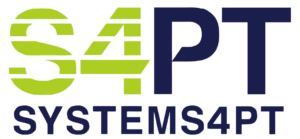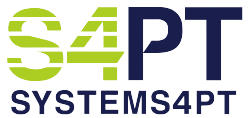The CMS 2020 Proposed Rule:
Review and Commentary
The CMS has released their proposed changes for 2020 and beyond. Highlights and commentary follow.
The Cap
The Medicare Cap, the use of KX modifiers, and the threshold will stay the same in practice. However, the CMS appears to be shifting some terminology. Other than semantics, it’s the same program as 2019. As always, charging Medicare beyond the cap requires that documentation contains unambiguous defense of the medical necessity for continued treatment and confirmation that forecasted increases in functionality are realized.
Meaningful Changes for PTA/COTA Reimbursement and Documentation in 2022
- If a PTA or COTA is involved with more than 10% of any CPT code charged, then that CPT code will be reimbursed at 85% of the fee schedule
- This proposal covers Medicare reimbursements only. But there is nothing stopping commercial payers from adopting this same payment reduction
PTA/COTA Documentation Changes for 2020
The CMS does not propose to lower PTA/COTA reimbursements in 2020 or 2021. No change.
However, to prepare for reimbursement changes in 2022, the CMS has proposed the following changes for 2020 and beyond:
- If a PTA or COTA is involved (in any way) with any CPT code charged, then the associated minutes must be segregated between the PT/OT vs. the PTA/COTA
- If minutes provided by the PTA/COTA are 10% (or more) of total minutes (for that CPT code), then that CPT code must be billed with a CQ modifier (for PTA involvement) or CO modifier (for COTA involvement), as well as other applicable modifiers
- The note associated with the charged CPT codes must include the following documentation:
- Each CPT code charged must be specified separately
- Per CPT code, the percentage of PT/OT time must be documented
- And the percentage of PTA/COTA time must be documented
- If the CPT code was delivered 100% by a PT/OT, documentation must specify the 100% percentage, in writing for each CPT code charged
The documentation outlined above is how the CMS will adjudicate the 15% reduction in reimbursements for PTA/COTA treatments, beginning in 2022. The CMS refers to the added documentation requirements in 2020 and 2021 as “Advance Practice,” enabling therapists to accurately settle in to the new policy.
Commentary:
This doesn’t make sense. After discussing their “Patients Before Paperwork” initiative and “Reduction of Documentation for Daily Visits” in the 2019 Final Rule, and then eliminating Functional Limitation Reporting, “Because the documentation is too burdensome,” the CMS now proposes to add 100 – 200 additional words of required documentation to EVERY note!
The proposal is 100% about reducing reimbursements
and 0% about increasing patient progression.
MIPS
To date, outpatient rehab is playing catch up with MIPS. Despite the CMS requirement that registries update practices on their MIPS submission status once per quarter, few registries have done so.
- Systems 4PT practices’ average trending MIPS score is 94.8 points, ending Q2
- 60% of our practices are trending toward 100 points
- We provide a 20-second workflow with QCDR Registry submission, all at no charge
Our advice: If you are paying extra to participate in MIPS, and if your registry has not kept you advised of your trending MIPS scores – STOP PAYING THEM. The point of a registry is to enable the practice to monitor (and react to) submission quality during the year, guiding the practice toward success.
As Expected, MIPS Will Tighten in 2020
- Instead of requiring 30 points to avoid takebacks, MIPS will require 50 points
- Instead of requiring 60% of eligible patients to be reported, MIPS will require 70%
The CMS is engineering MIPS to intentionally increase the number of practices who suffer takebacks in order to increase funding for high-scoring practices. Everything we’ve discussed is happening.
MIPS is a program designed to segregate healthcare into winners and losers.
And the losers pay the winners.
Bonus payment amounts for 2019 have not yet been calculated. The 2018 bonus was < 2%.
By increasing the number of takebacks in 2020 and beyond, the CMS will increase the bonus reward percentage for high-scoring practices.
Medicaid and MIPS:
Note that on page 606, the CMS discusses urging State Medicaid Payers to adopt MIPS Quality Measures, including potentially the same registry submission. It makes sense that the CMS wants one channel of communication for quality.
Commentary
This seemingly right-headed intention could have a significant impact on our industry. If state Medicaid payers adopt MIPS quality protocols and registry submission, then practices who opt out of Medicare MIPS could find themselves required to participate in MIPS because of state payers.
State Medicaid payers could make MIPS a de facto requirement.
As we’ve discussed, those who participate in MIPS (those who are “good at it”) will likely score much higher points than those who avoid MIPS but “jump into the game” later when the rules are brutally difficult. Technology such as our no-charge, 20-second workflow is the answer.
The Future of MIPS: MVPs
Looking ahead, the CMS is committed to establishing “Medicare Value Pathways” (MVPs). The goal here is to integrate, connect. and interrelate “quality,” “interoperability,” and “cost” with each other. The CMS envisions greater transparency and accessibility to medical records for patients. One of many stated goals is to give the patient an “increased voice” in the decision-making process.
Commentary
Obviously, quality, communication, and cost are interrelated. The problem is that standards have not been established that allow medical providers to benefit from the information (particularly across medical disciplines). The CMS is pushing all involved stakeholders to progress toward this vision. Outpatient rehab would be wise to see this as an opportunity to demonstrate that our industry delivers higher progression, at lower costs, than surgical or medicinal alternatives.
Proposal to Revalue CPT Codes in 2021
Back on September 18, 2018, the APTA ran a “PT in Motion” online news article. The APTA discussed the CMS’ 2019 physician’s fee schedule, including proposed future changes in valuing evaluation and management (E/M) visits. Introduced as a vision intended to reduce paperwork, future E/M payment rates would be greatly simplified. More complex E/M visits would realize higher payments, while most E/M visits would be hit with reductions of their relative value units. The CMS rationalized that the reduction of paperwork would offset the decreased reimbursement for these lower complexity visits.
http://www.apta.org/PTinmotion/News/2018/09/18/EAndMLetter/
This very clear vision of revalued PT/OT codes resulting in lower reimbursement rates has largely flown under the radar in our industry. But it appears that the CMS continues to discuss the concept in the 2020 proposed rule.
Proposal to Revalue CPT Codes in 2021
On page 1187 of the 2020 proposed rule, the CMS proposes to “revalue” PT/OT CPT codes in 2021, resulting in an estimated reduction of 8% in PT/OT allowable charges.
The rule is full of doubletalk such as: “We remind stakeholders that although the estimated impacts are displayed at the specialty level, typically the changes are driven by the valuation of a relatively small number of new and/or potentially mis-valued codes. The percentages in Table 110 are based on aggregate estimated PFS allowed charges summed across all services furnished within a specialty to arrive at the total allowed charges for the specialty and compared to the same summed total for the previous calendar year.”
The doubletalk continues: “We believe these estimates provide insight into the magnitude of potential changes for certain specialties.”
It can be very difficult to interpret the CMS’ guidance. But statements such as “…[-8%] allowable charges compared with the previous calendar year” are concerning.
While we, as an industry, confidently profess that PT/OT is the low-cost/high-outcome alternative to surgery and medication, the CMS appears to be proposing to follow through with previous proposals that would lower our reimbursements.
Plan A must be to innovate more effective ways to communicate the value of PT/OT/SLP. We need to be viewed as an industry that deserves to be rewarded, and not viewed as overpaid.
Plan B will require that each of us further improve efficiencies, enabling the practice to generate equal (or higher) levels of profit to what is currently earned, even if these looming reimbursement changes become reality. Because of this:
Systems 4PT is laser-focused on compliance and documentation efficiency.
- Our EMR data mines the electronic patient check-in portal and recommends 1,250 patient-specific words in the average eval. If you type 60 words per minute, this saves over 20 minutes of typing
- Our EMR provides a library of your frequently used treatment plans, which auto load your favorite flow sheets in the blink of an eye vs. typing 20 – 40 rows of treatments and exercises. Your flow sheets are pre-loaded with clean CPT codes that get paid, and with unit charges that maximize legitimate charge capture. You then edit the plan
- The CMS’ 2019 Final Rule (released 11/1/18) gave us permission to document less in daily notes. Our daily note workflow has since been updated to take advantage of this. Most Systems 4PT daily notes are signed before the patient leaves the practice
Treat More, Type Less
The above isn’t a tag line. It’s the only way to thrive amidst these changes.

